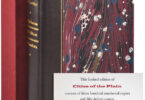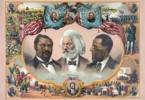If you are reading this guide, you may have already fallen for the beauty, historical significance, and educational value of maps. There is also a high probability that you are already a map collector but are seeking to build your collection. To help you navigate the ins and outs of your new passion, we have prepared this guide with the basics of map collecting.
Understanding the Basics of Map Collecting
Historically significant, beautiful, and intellectually stimulating, maps provide a great deal of enjoyment, which is why people collect them. Eye-catching and extraordinary, some antique maps are significant and remarkable in how they were made and what they represent.
Maps teach us about history, politics, religion, technology, and sociology. At the same time, they take us to other lands and other times.
It will require some time studying to get into the world of antique maps, as there is a wide range of prices, terminology, and mapmakers. But once you learn the basics, and with the help of the map-collecting community, you will be ready to curate your own.
There are some things you need to consider:
Map Sizes
The majority of maps available to collectors today are printed maps that were originally bound into books and atlases. Those that are from atlases were usually folded in half so they could fit into the binding. This type of map is called a double-page map, and they have a centerfold. Of course, there are also other sizes such as single-page and partial-page maps. Map sizes are sometimes given as folio, quarto, or octavo.
Terminology
Some terms used to describe maps come from the antiquarian book world. Still, there are many others you should get familiar with:
- Borders: the area that frames the map
- Neatline: the outermost line
- Margin: the space between the neatline and the edge of the paper
- Cartouche: the place where the name of the map is located
- Scale: the ratio between a distance on the map and the corresponding distance on the Earth’s surface.
- Compass rose: it indicates where the North is
- Recto and verso: The front side of the map is called the recto while the back is the verso
- Types of copies: a reproduction copy is a modern copy of an old map. On the other hand, a facsimile is made with great attention to simulating the original and is designed to be as close to the original as possible.
Condition
When you are a novice in the field, the best way to familiarize yourself with condition terms is to examine as many maps as possible. Maps are graded according to the codes adopted from The Antique Map Price Record & Handbook 1998. The range goes from excellent to poor condition. As it happens with books, the items’ preservation state is not the only variable to take into account. Scarcity and rarity also influence the market value of the maps.
Identifying Your Niche: Building Your Map Collection
You could follow cartographic trends, but the most common advice when you are planning your map collection is that it should be personal. It is important to choose a focal topic and stick with it. Popular collecting includes: tracing your familiar provenance, choosing places you have traveled, or a time of history that sparks your intellectual curiosity. Once you have chosen a topic that resonates with you and your interests, it’s time to shop!
Let’s discuss the financial aspects
The market for antique maps has something for every budget. Some vintage cartography has the reputation of being expensive. The reality is that there are many types of maps and not all cost a fortune. It becomes expensive if you are looking for the rarest or more exceptional items of cartography, but map collecting can be quite an affordable hobby. For instance, 19th-century maps can usually be found at reasonable prices. During that time, maps and atlases became common household items, and they were widely printed and distributed. Another affordable niche is miniature maps.
Nevertheless, as mentioned, several variables affect the value of a map. There are 16th-century maps on the market for under $200, and you can also find 19th-century ones valued at several thousand dollars.
Where to Find Treasure: Navigating the Map Market
Here at BIBLIO, we host over 7,500 bookstores, including specialists in maps. You can check them out here:
The first piece of advice for newbies in map collecting is to find reputable sellers, institutions, or auction houses specializing in maps to ensure you are buying authentic pieces. The map-collecting community is so friendly and welcoming, and a reputable dealer can guide you through the ins and outs of your new hobby, and help you understand the historical map valuation and the basics of rare map acquisitions.
There are also several map fairs in cities such as Miami, San Francisco, London, and Paris, where dealers worldwide showcase their collections. Take a look, for instance, at the London Map Fair at the Royal Geographical Society, the yearly Miami International Map Fair, and the biennial International Conference for the History of Cartography.
If you can’t attend the fairs, their websites are a great source of information on reputable sellers you can contact. You can also search for specialized sellers in professional associations such as the ABAA (The Antiquarian Bookseller Association of America), in which members are subject to strict professional and ethical standards.
Preserving Your Precious Finds: Map Conservation Tips
It wasn’t until the 19th century that cotton and linen rags were replaced by wood pulp as the main ingredient in paper. That change resulted in a thinner, more fragile paper and affected how condition problems are evaluated nowadays. For example, you can find in the market an old map from the 18th century in a much better state because of the thicker durable material it was made from than one with 100 years old. And that’s something specialists take into consideration when buying modern maps as minor issues are expected.
Some of the most common condition issues on many maps that generally don’t decrease their value significantly are age spots, light soiling, minor creases, small worn holes, and faint damp stains. As happens with books, many of these minor issues can be repaired by professional paper conservators, who can also give you some advice about map conservation techniques.
How to Store your Map Collection
Do you have enough maps to consider it a collection? Then it’s time to catalog and store them.. First and foremost, be gentle when handling them: touch your maps with your hands clean in a clean work environment, don’t use paper clips or other fasteners, and avoid ink to make any mark or inscription.
As happens with books, you have to store your maps in a cool, relatively dry room, avoiding exposure to any kind of direct light or heat. File maps flat when possible. Store them unfolded if you are going to place them in a drawer. Acidic papers should be individually stored to prevent the migration of acids into other works. There are alkaline buffered storage materials that neutralize acids, but be aware that some paper can be sensitive to alkaline pH. You can purchase from preservation suppliers folders, boxes, polyester film sleeves, and many other materials according to your needs.
Professional associations have many resources to help you out with conservation. You can check these:
Helpful Hints for Small Map Collections from the American Library Association
Map Librarians’ Toolbox from the Western Association of Map Libraries










Wow a new world with maps!